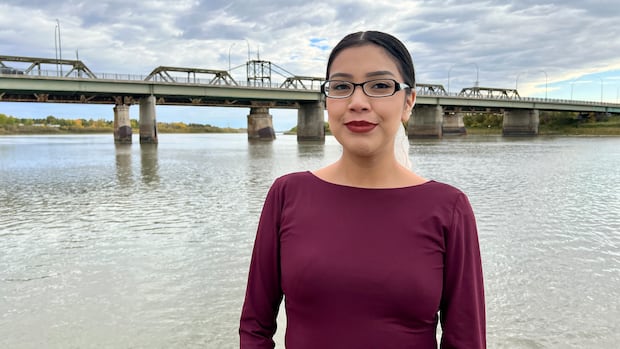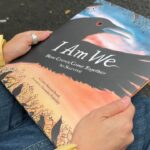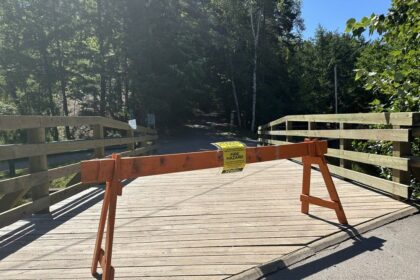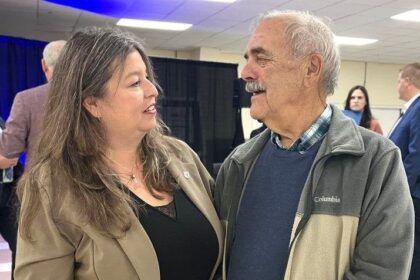ManitobaIn a bid to halt rising drug addiction in Opaskwayak Cree Nation, the community hopes to build a rehabilitation facility that would have flexible space to accommodate families as well as people with addictions, but funding from the federal government has yet to arrive. First Nation has land, plans for facility that would accommodate families of different sizesFelisha Adam · CBC News · Posted: Oct 15, 2025 2:20 PM EDT | Last Updated: October 16Mandy Bighetty says if the new facility and the comprehensive addictions program had been available when she needed it, she could have been further along in her healing journey. (Travis Golby/CBC)In a bid to halt rising drug addiction in Opaskwayak Cree Nation, the community hopes to build a rehabilitation facility that would have flexible space — with movable walls — to help families as well as people with addictions.However, the needed funding from the federal government has yet to arrive. Mandy Bighetty, 23, who was introduced to drugs at 16 while living in the small northern community about 520 kilometres northwest of Winnipeg, says drugs were always accessible, making it hard to stop using. Seven years later, she is recovering, but now she says things have gotten worse. More often than not, she says, it’s youth falling victim to substance abuse.“You see people indulging in methamphetamine,” Bighetty said. “You see high school students taking and consuming that meth … drug dealers giving this meth to the youth.”Bighetty said the community of more than 6,000 people is at risk of losing a large part of its next generation to drugs, something brought on by dealers in the area.”They don’t care who they’re giving it to. It’s just all about their profits, their money,” she said. “They don’t realize the damage they’re doing to our people and to our community.”Opaskwayak Cree Nation hopes to build a healing centre at Egg Lake that will support families as well as those who need care. (CBC)Bighetty, who had to travel to Saskatchewan for rehabilitation, said more help and resources are needed for people going through substance abuse in Opaskwayak.”Dealing with a drug addiction is very hard, and if we don’t have that support �… they will lose their lives,” she said.There are currently no permanent rehabilitation centres within Opaskwayak. The closest one is in The Pas, which means people needing care have to leave home.In an effort to help, Opaskwayak Health Services and Child and Family Services created a 21-day pilot program in March, operating in a small facility within the community.The facility can handle six people at a time, providing programs that help them overcome their addictions, including land-based programs such as hunting and fishing.WATCH | Donna Asmus talks about how Opaskwayak Cree Nation plans to fight drug use:Manitoba First Nation waits for drug rehab facility fundingIn an effort to fight growing drug addiction in Opaskwayak Cree Nation, the community wants to build a rehabilitation facility that will have movable interior walls to accommodate families of different sizes. However, funding from the federal government has yet to arrive.”We needed something right now,” said Donna Asmus, who oversees the National Native Alcohol & Drug Abuse Program and is the community wellness manager at Beatrice Wilson Health Centre.Growing wait times for addiction centres in Manitoba and across Canada mean fewer and fewer people in Opaskwayak are getting into programs when they need help, Asmus said. As of late September, 130 patients were seeking treatment, waiting to see a counsellor or waiting to do an addictions assessment at the health centre.The 21-day pilot program has helped roughly 15 people to date, but Asmus wants to do more.”I just see a lot of our children suffering from, you know, from the substance abuse that does occur,” she said. “It’s really sad.”The community hopes to build a healing centre on Egg Lake that would support not only individuals, but families as well, by creating a space with movable walls to accommodate different family sizes. Donna Asmus says growing wait times for addiction centres in Manitoba and across Canada mean fewer and fewer people in Opaskwayak are getting into programs they need. (Felisha Adam/CBC)The new program would run for three months and include life skills classes, such as cooking and budgeting, accommodating 20 individuals and up to five families.Asmus said it would also mean fewer people relapsing, “just based on the amount of time that we have with them.… We’re creating those strong boundaries … practising with them in regards to saying ‘No,'” she said.But even though they own the land, have the blueprints and have a developed program, the community is missing the needed infrastructure.Asmus said $63 million is needed for the project.”We need the secure funds to get this going,” she said.The community applied for funding through Indigenous Services Canada in fall 2024, but Asmus chafes at the delay. “I know things take time,” she said. “However, we need this, like I said, yesterday.” A spokesperson from Indigenous Services Canada acknowledged on Oct. 14 they have received and reviewed the application for the addictions treatment facility, but could not offer an update on the proposal.Asmus fears what will happen if they do not get the funding soon.”There would be so much more people being addicted.… Then of course, the crime is going to increase.… The safety is just going to decrease.”Once the community gets the funding, the facility would take at least another three years to be completed, Asmus said.’Positive things’In the meantime, some community members are trying to get youth interested in positive activities.Cindy Swampy, a teacher at Joe A. Ross School, runs a powwow group of about 25 students ranging from Grade 1 to Grade 6. “I want to keep them busy,” said the 22-year veteran teacher. “You don’t want them to find trouble.”The hour-long after-school program runs throughout the school year, encouraging youth to take part in something positive — something Swampy said benefits the community in the long run.”There’s a lot of positive things to do in the community.… There is a lot of programming for [youth] if they want, if they choose to go,” Swampy said.Teachers share information about the programs with students through flyers and on Facebook.Cindy Swampy is one of many teachers at Joe A. Ross School trying to create programs and activities that serve as positive outlets for youth. (Travis Golby/CBC)Swampy has seen how being part of the powwow group has positively impacted students, helping them through hard times in their lives and getting them closer to their culture and tradition.”It’s a big part of healing,” she said.She hopes to see more programs in the evenings for youth.”It’s always a continuous job, to keep our youth busy, to encourage them and showcase them.”ABOUT THE AUTHORFelisha Adam is a reporter for CBC Manitoba focused on covering local stories. She previously worked as a video journalist and reporter in Montreal. She has covered politics, international affairs, community initiatives, healthcare, and education. Share your story ideas, tips and feedback with Felisha.adam@cbc.ca.
Wednesday, 17 Dec 2025
Canada – The Illusion
Search
Have an existing account?
Sign In
© 2022 Foxiz News Network. Ruby Design Company. All Rights Reserved.
You May also Like
- More News:
- history
- Standing Bear Network
- John Gonzalez
- ᐊᔭᐦᑊ ayahp — It happened
- Creation
- Beneath the Water
- Olympic gold medal
- Jim Thorpe
- type O blood
- the bringer of life
- Raven
- Wás’agi
- NoiseCat
- 'Sugarcane'
- The rivers still sing
- ᑲᓂᐸᐏᐟ ᒪᐢᑿ
- ᐅᑳᐤ okâw — We remember
- ᐊᓂᓈᐯᐃᐧᐣ aninâpêwin — Truth
- This is what it means to be human.
- Nokoma











